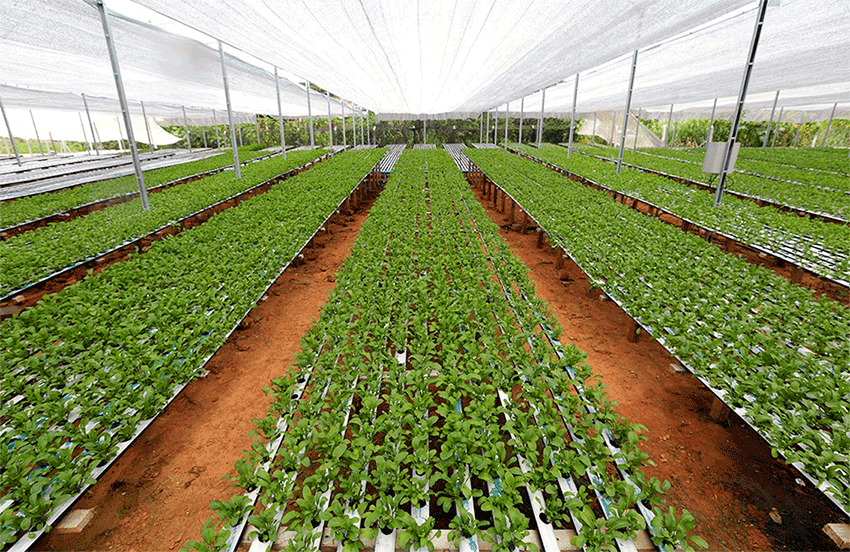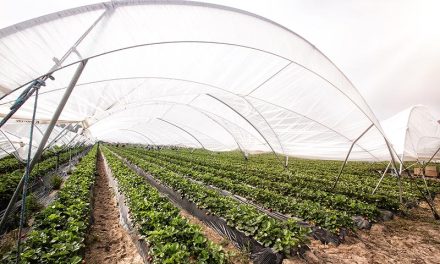
Hydroponic crops: what is it all about, pros and cons

Agriculture considers a wide variety of options to take full advantage of the resources available and to learn how to make good use of the benefits of the weather and soil properties of each region. One of these options is known as hydroponics. In this article we will try to explain in more detail everything related to this agricultural alternative and hydroponic crops.
Hydroponics has to do with the cultivation of plants without having to use soil. In other words, it is a whole production system where plants are grown in an artificial space when natural land is not available. But what about the nutrients present in the soil? In this case, dissolved minerals are used in the water that will be used to irrigate the crops, which will be administered to the plants from time to time.
Today, there are many farmers who are inclined to promote hydroponic crops, especially those who are in areas where agricultural practice, as it is known since its origin, is not feasible.
Hydroponics is a very efficient alternative that can be truly sustainable in the short and long term, once the necessary measures are implemented for proper operation.
It is an ideal choice for plant care, since one of its main features is that it works very well in large cities, as it allows to take advantage of even the smallest space to grow plants. In fact, there are hydroponic crops that have been implemented in vertical structures such as walls of buildings for example, with very good results.
For farmers it is important to know in depth the pros and cons of each agricultural alternative when looking to promote successful agricultural projects, and it is precisely for that reason that we mention below some of the main advantages and disadvantages of hydroponics.
Advantages of hydroponic crops:
- Adverse environmental conditions are not a problem
When there are severe weather conditions or water and soil restrictions, hydroponics emerges as the ideal choice. There are regions of the planet where, despite our personal expectations, soil conditions are not given for proper cultivation and, therefore, it is common to see a scarcity of plant-based foods.
Hydroponics is suitable in regions of adverse climatic conditions since, in addition to taking advantage of water through closed irrigation systems, it uses substrates or preparations of minerals that take the place and functions of the soil without it physically existing.
- Better quality products are obtained
Probably, there are still farmers who believe that it is almost impossible to obtain excellent products if you don’t have a good soil. The truth is that hydroponics offers one of the best alternatives to control many of the factors that directly affect the development of crops such as the concentration of nutrients and pH, which, when combined with plastic and protective structures, allow the producer to maximize the potential of hydroponic crops.
- It is versatile and increases the performance of the surface used
It can be modified and adapted to different projects, according to the particular needs, as long as the socio-economic and environmental aspects of the areas where it will be applied are considered, since that will determine the type of technology and tools to use.
Likewise, it helps to obtain higher yields per area unit compared to open field crops, when it is properly cared for.
Disadvantages of hydroponics
- Capital investment
It is the main aspect to consider since installing a hydroponic system requires a significant disbursement of money to acquire filters, pumps, pipes, shut-off valves, substrates, containers and tanks, among other things. However, you can quickly recover the investment by utilizing efficiently the hydroponic system.
- Crops are more delicate and plants more dependent
By not having a land that supports crops when there are sudden changes in the climate for example, plants can compete for water, light or nutrients which causes stress. All of this can make them more susceptible to the slightest change, and that implies being more careful and keeping an eye on their development to prevent those alterations from affecting the plants.
- Needs other mechanisms to be successful
It is an aspect that is often overlooked, because despite being a system that helps improve the development and yield of crops, producers must be aware that it won’t work on its own and should rely on other technological and human-related mechanisms to thrive such as for example automated fertigation units and greenhouse or tunnel structures.
- Requires greater dedication of the farmer
Contrary to what many believe, when it comes to hydroponics, agricultural producers must be more aware of the details and spend more time monitoring that everything is working out as expected. Changes can take place be at any time so reviews should be done daily.
Importance of temperature control
The type of season the hydroponic crops are experiencing should be considered, as a way to identify what are the climatic conditions that will be determinants for the crops to develop in an optimal way or not.
It is very important to know how to choose the right structure for the ideal location, as well as the tools to use to get the most out of these crops without the season being an inconvenience.
The role of agricultural plastics for hydroponic crops
One of the best alternatives is to use structures with plastics specially designed to respond to every need. According to information published on the website African Farming, the choice of the type of infrastructure to be used for vegetable crops will depend strictly on the climate factor, so agricultural producers will be able to grow vegetables year-round in areas that don’t experience frosts using shade-net structures, while in areas where frosts are common, it will be necessary to use tunnels to keep crops safe from low temperatures.
The advantage of using structures covered with this type of plastic materials is that it is possible to regulate the temperature in a more efficient manner, unlike the shade-net structures.
One of the materials recommended for its application in hydroponic crops is the bicolour sheet (black and white) by Sotrafa, made from LDPE and LLDPE (linear) in multilayer coextrusion, with thicknesses starting at 100 microns (400 gauges), which has excellent mechanical properties.
The white part of this film -specially designed for hydroponic crops- contributes to the precocity of crops by reflecting solar radiation and providing additional light. Also, this film helps prevent burns from heating less than a black film, repels some insects and limits the growth of algae and weeds in circulation channels, thus avoiding nutrient degradation.





![[eBook] Sustainability and water management](https://agriplasticscommunity.com/wp-content/uploads/8_550x310_ENG-440x264.png)
![[eBook Trends in Agriculture Plastics] Increasing use of biodegradable mulch](https://agriplasticscommunity.com/wp-content/uploads/550 × 310_2_ENG-440x264.png)
![[eBook Trends in Agriculture Plastics] Reducing the plastic used in the manufacture of agricultural films](https://agriplasticscommunity.com/wp-content/uploads/550 × 310_1_ENG-150x150.png)





















